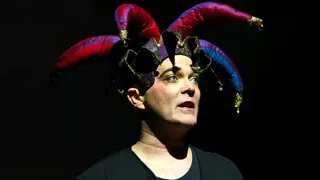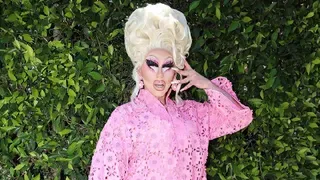June 24, 2012
Puerto Rico...¡Fuá!
Chris Sosa READ TIME: 3 MIN.
Puerto Rico can be a peculiar experience for visitors, with its confusing mix of cultures and commercialism, of Spanish and English - Spanglish - of classy and cheap art and design. It's a foreign place that uses American dollars and doesn't require a passport.
In other words, it's pretty much South Florida -- with mangoes.
Eventually, the strangeness and shock wear off, and by the time you leave the beauty of the people and the place has charmed you enough you'll be happy to go back.
The same pretty much can be said for Puerto Rico...�Fu�!, which GALA Theatre calls ''the most popular Puerto Rican musical of all time,'' and from which the comparison to Florida derives. The local theater company offers the area premiere of Carlos Ferrari's musical, first staged in the '70s on the island.
Puerto Rico...�Fu�! doesn't include any specific references to Puerto Rico or Puerto Ricans in American popular culture - not even West Side Story or Rita Moreno. Still, you can't help but wonder whether Ferrari was inspired by Moreno's work in the early '70s-era series The Electric Company. That PBS children's show, produced by what is now the Sesame Workshop, was geared to young kids who had outgrown Sesame Street, offering sketch comedy-based educational lessons about grammar, reading - and diversity.
Puerto Rico...�Fu�! isn't by any means strictly educational, and it's certainly not geared to children - though the generally cheery, cheesy music, played with verve by local salsa band Sin Miedo (Without Fear, in Spanish), and the slapstick and exaggerated humor would appeal to adolescents. After all, the show does include a skit in which a Spanish teacher makes learning the alphabet fun by acting out in unison the letters. L-U-V, Puerto Rico!
The show's 32 skits progress through key points in the history of the Enchanted Island, from its pre-conquistador time with the indigenous Taino peoples, to Spanish colonization and Catholic conversion, to the ''real clown act'' that was the Spanish-American War, to finally adopting American ways and customs. All action takes place on Luciana Stecconi's stage built for a one-ring, traveling circus, heightening the jovial mood.
Director Luis Caballero, with assist from Hugo Medrano, does a remarkable job of getting his cast to work as a team while allowing individuals to shine. GALA actor Anamer Castrello is allowed several solo turns to show off her golden husky voice, which to my ears recalls the great Puerto Rican pop star Olga Ta��n. And GALA's Jos� Manuel Ozuna-B�ez once again demonstrates his dazzling perma-smile and elastic moves - and he does double duty here, acting as lead choreographer and getting the other actors in line. Antonio Vargas assists Ozuna-B�ez with the choreography, though you'll remember Vargas best not for his moves but for playing first a hunky Indian wearing nothing but a short dress, and especially as a transvestite prostitute.
The top-flight eight-person ensemble, most of Puerto Rican descent, is at its best when satirizing the Americanization of their culture - including adopting Santa Claus and accepting his dubious gifts, from ketchup to hot dogs to ''holidays that have nothing to do with you,'' specifically Halloween and Thanksgiving. The show also provides great laughs in its portrayal of Spanish rule and authority as an endless beauty pageant. The pretty Isabel H. Arraiza serves as the Puerto Rican pageant contestant repeatedly crowned with autonomy, only to have her reign revoked every few years or so.
The show's most effective metaphor is a wedding ceremony in which Uncle Sam (Joel Perez) is betrothed to Arraiza, once again playing the role of the ''Beautiful Island of Puerto Rico.'' (Alicia Tessari's costumes are fittingly funny.) Not that she's happy to be here, in this case: She's the unwitting spouse to Uncle Sam, and the officiating minister - a commanding Ricardo Puente - explains that she has no real say in the decisions Uncle Sam will make in both of their interests, except that she must be willing to fight and die in war. The minister proceeds to ignore the many Puerto Ricans with objections to the marriage. By the time of the ceremony, Arraiza is nothing more than a battered rag doll, repeatedly propped up by her American military husband as he leads them in a ceremonial dance. It may not be wedded bliss and happily ever after, but it sure is a bitingly funny moment.
Perez later portrays a ''Nuyorican,'' a New Yorker of Puerto Rican descent whose mixed-cultural identity is even more perplexing to the average American than those of island inhabitants. In other words, he's pretty much a Floridian without the sunny disposition.
Puerto Rico...�Fu�!
Three and a half stars
To July 1
GALA Theatre
3333 14th St. NW
$20 to $40
202-234-7174
galatheatre.org







